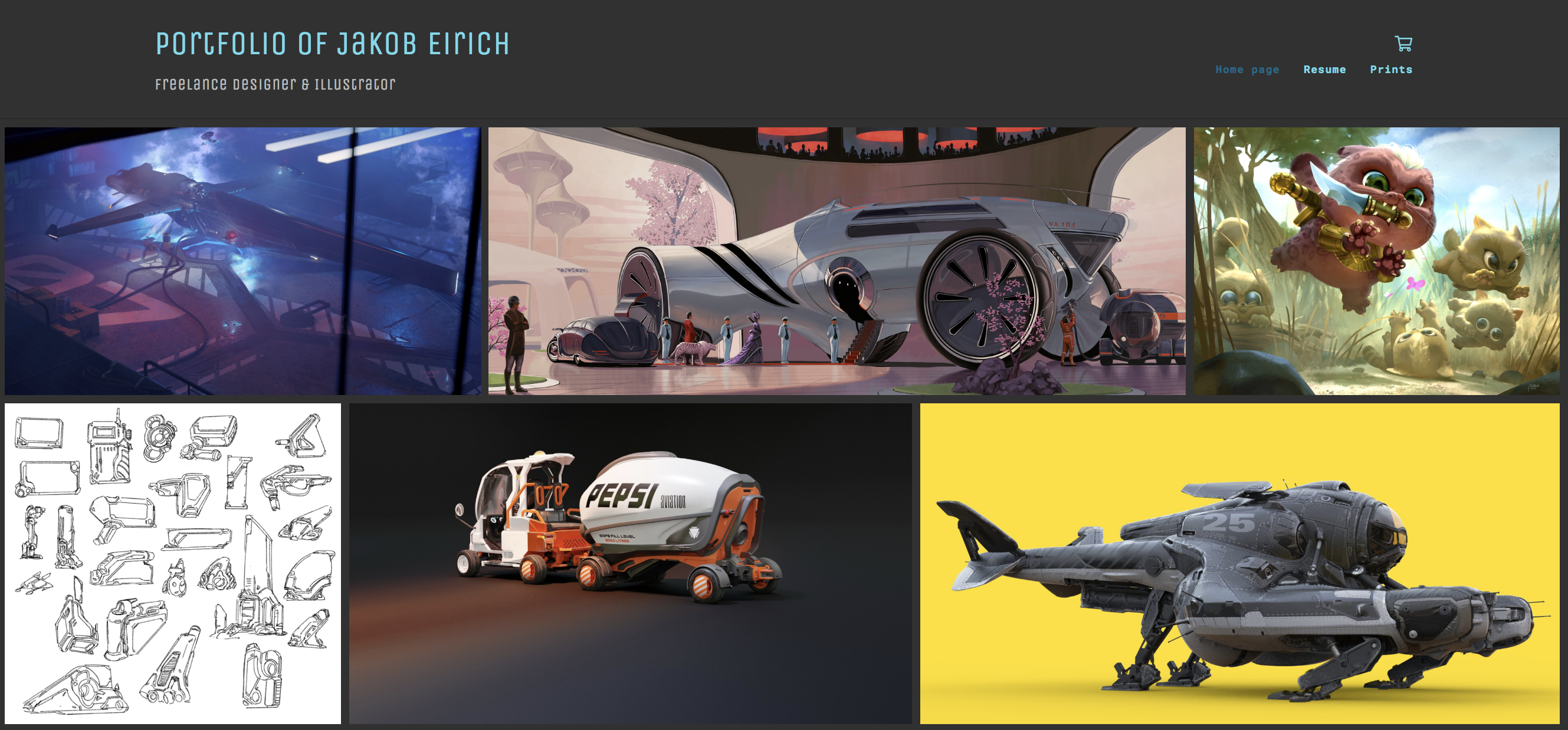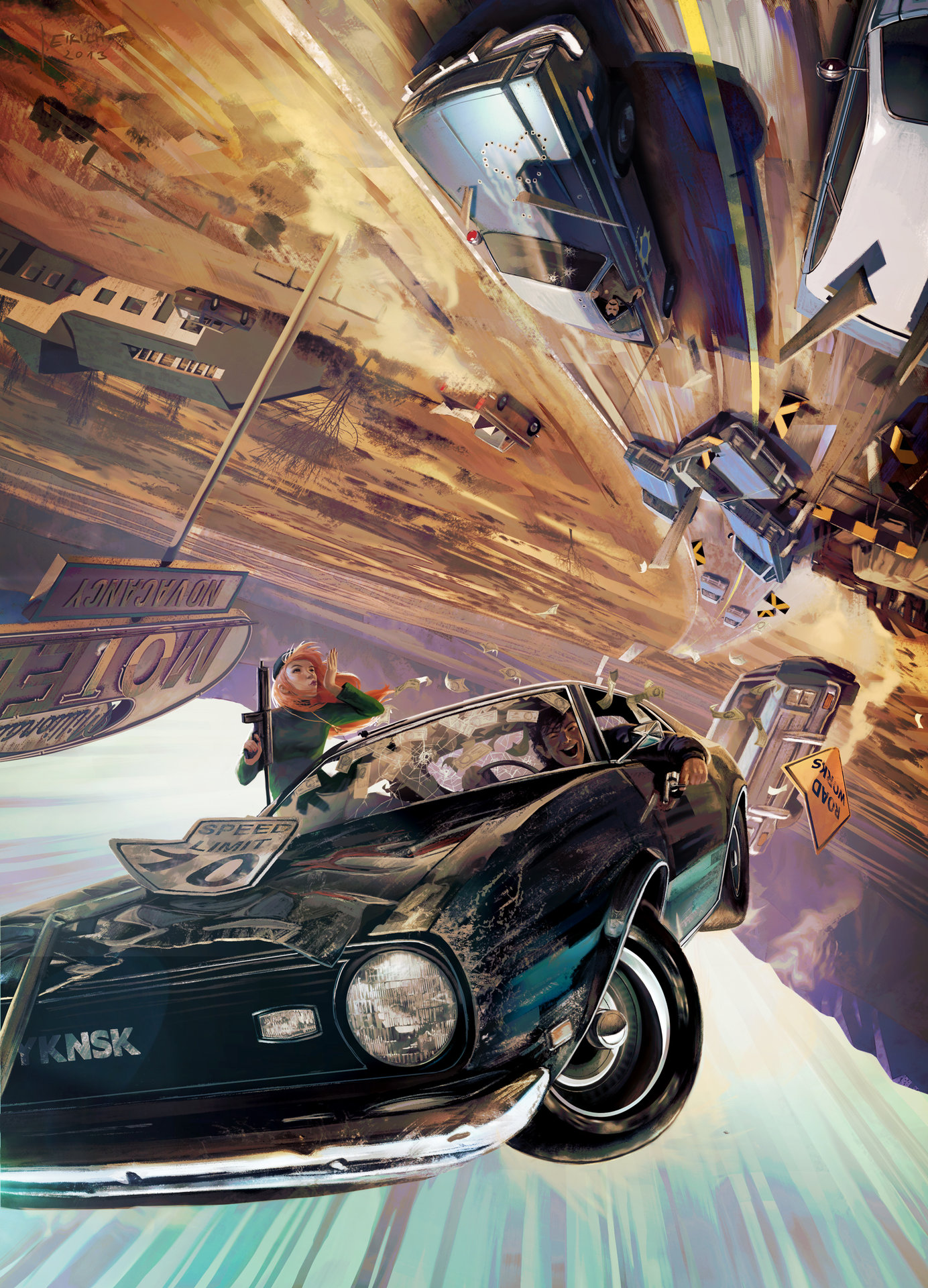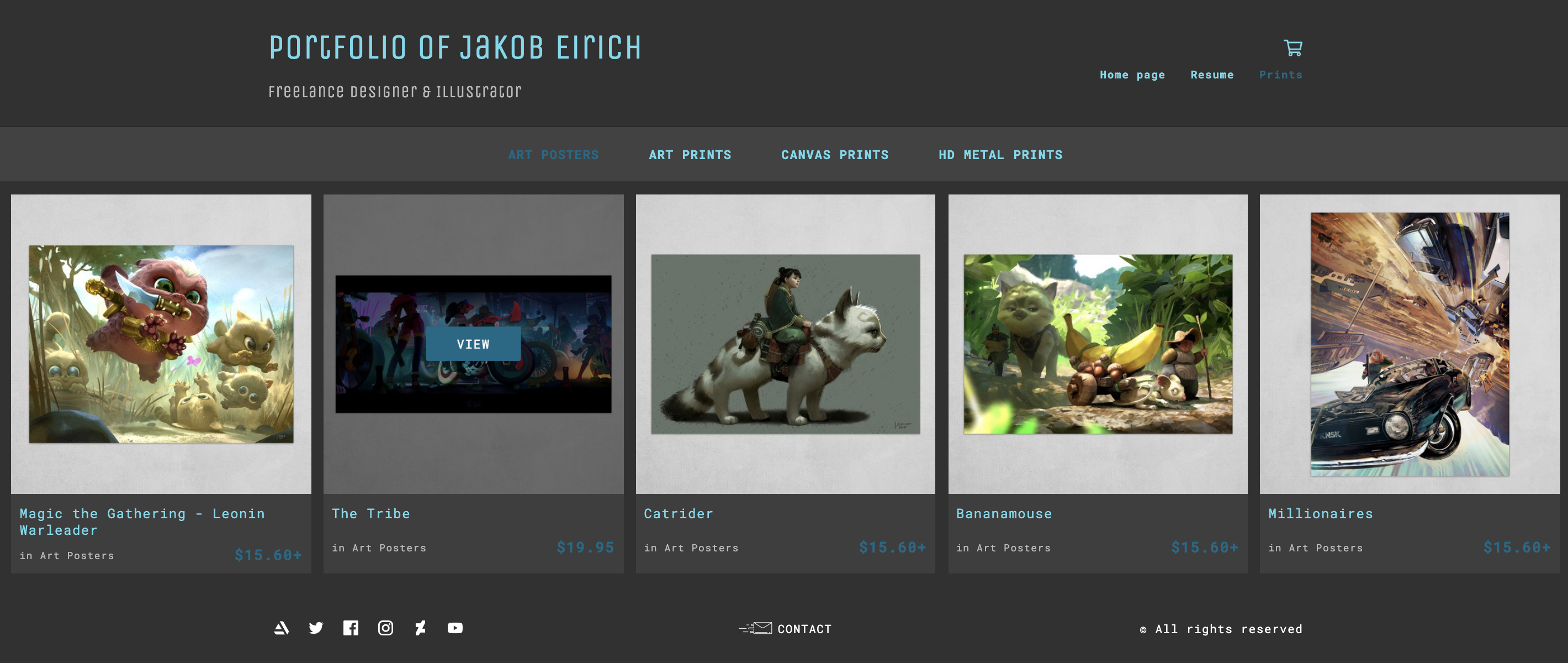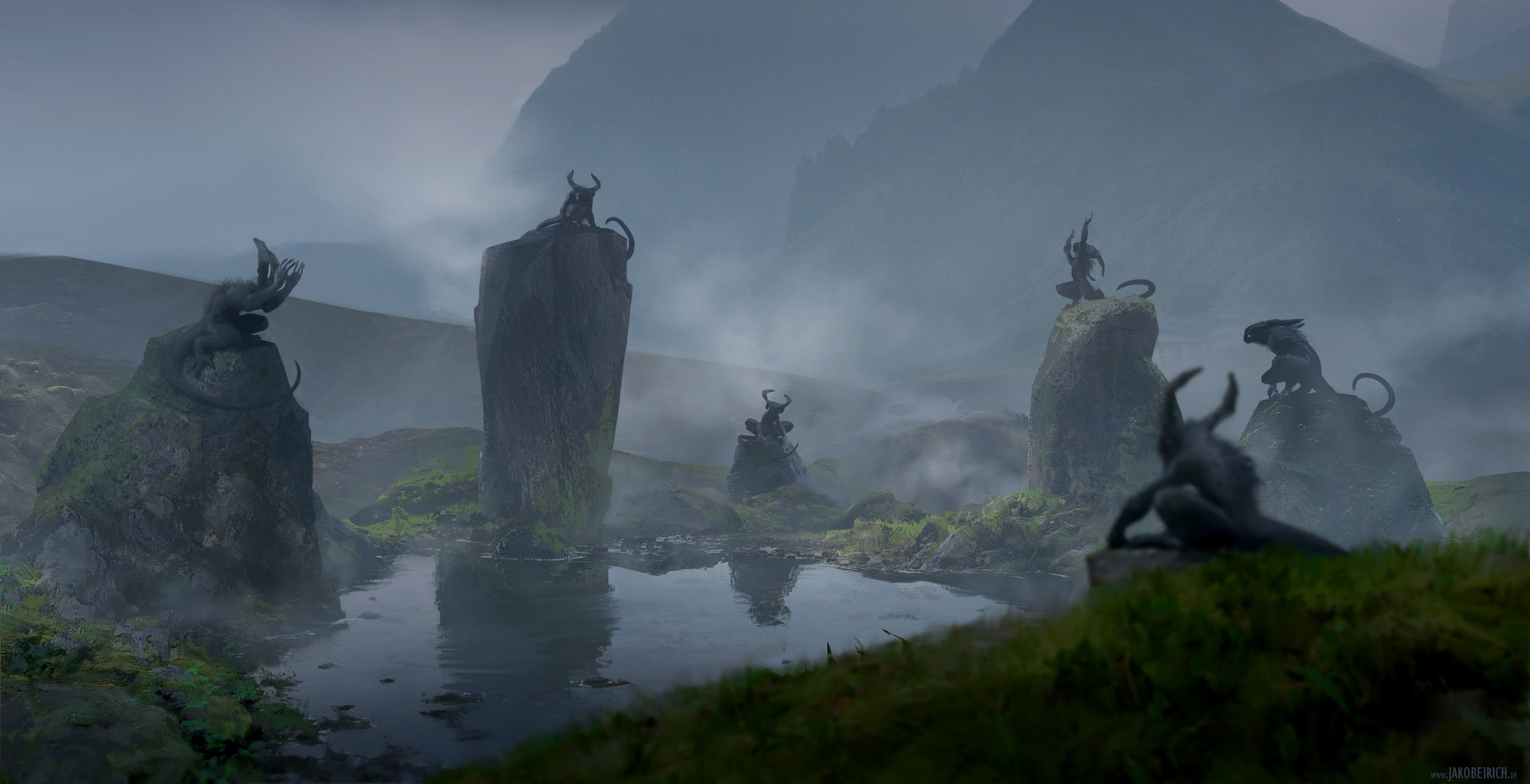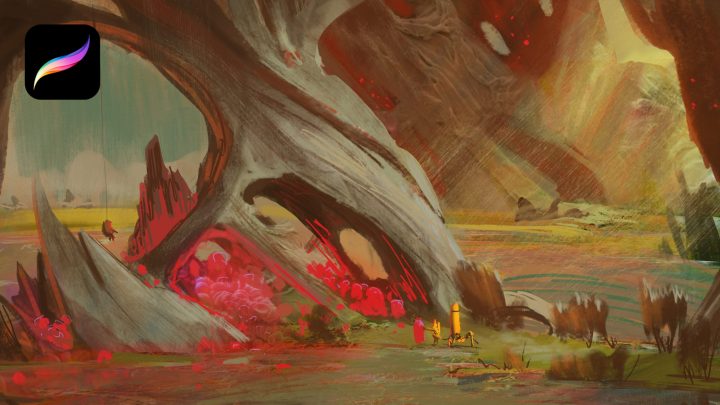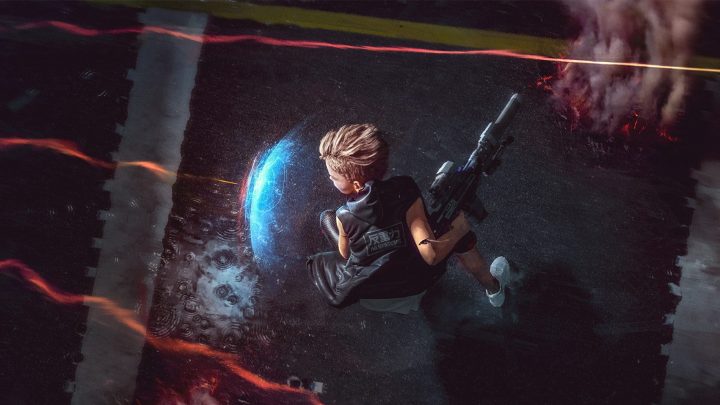Featured Pro Portfolio: Jakob Eirich
Jakob Eirich is a versatile concept artist and illustrator born in Kazakstan and now based in Germany, where he studied Graphic Design. He now contributes to both small projects and large IPs in the video game, television, film and book industry.
Check out Jakob’s ArtStation-powered portfolio website.
Tell us about one of your favorite pieces of your portfolio.
I had to think about that for a long time. Since I’m quite hypercritical of my work and can rarely be fully satisfied with something I did, it’s hard to pick pieces. If I have to choose, I would say both “The tribe” and “Millionaires” are equally up there.
Millionaires
The thing about them is, they were both done for challenges and did make the first place in both of them. Since I’m quite a competitive person, I strive for opportunities like these where I can compete against some of the best and see what I can achieve. With both of these artworks, I set out to try something else and get out of my comfort zone. This was the opportunity to learn, grow and challenge my own capabilities. Seeing how other artists approached the subject also helped me to learn about myself and what I can achieve work within the same boundaries. Winning both competitions was, of course, the icing on the cake, I can’t deny that, but it goes beyond that.
The Tribe
How did you begin your career as an artist?
I am one of those artists who discovered their passion very early on. I grew up with all those 90s superhero shows and was constantly drawing while watching them. When I was around 19 years old, I had to decide which way to go with my education. Up until that point, I have been drawing and painting characters, vehicles, and environments in different mediums and styles. I tried everything that I could think of and could afford, including drawing short comics, oil portrait painting and a lot of military model making. I had a very broad range of interests in the art field so the decision of what career path to choose was not an easy one.
My plan was to apply to an automotive design college, but for personal reasons, I eventually applied to a graphic design college which was closer to my home. Around 2004, I got in touch with digital art for the first time with Blender3D. Then the internet became more accessible to me and I joined an online 3D art community. In 2006, I finally learned of graphic tablets and digital painting and realized that this is what I want to pursue. Once I graduated, I started applying for inhouse jobs at game studios while also doing a bit of freelance illustration work on the side.
I got a job at Realtime Worlds in Scotland and worked there for 3 months. I learned that an in-house position is not the right fit for me. But, quitting and moving back became only an option when I received offers for freelance jobs. It looked like a viable solution due to the demand, so I quit in March 2010, went back to Germany and started freelancing full-time ever since. Luckily, the branch of art I ended up in is one that supports my manifold interests and gives me the opportunity to work on a variety of subjects and projects.
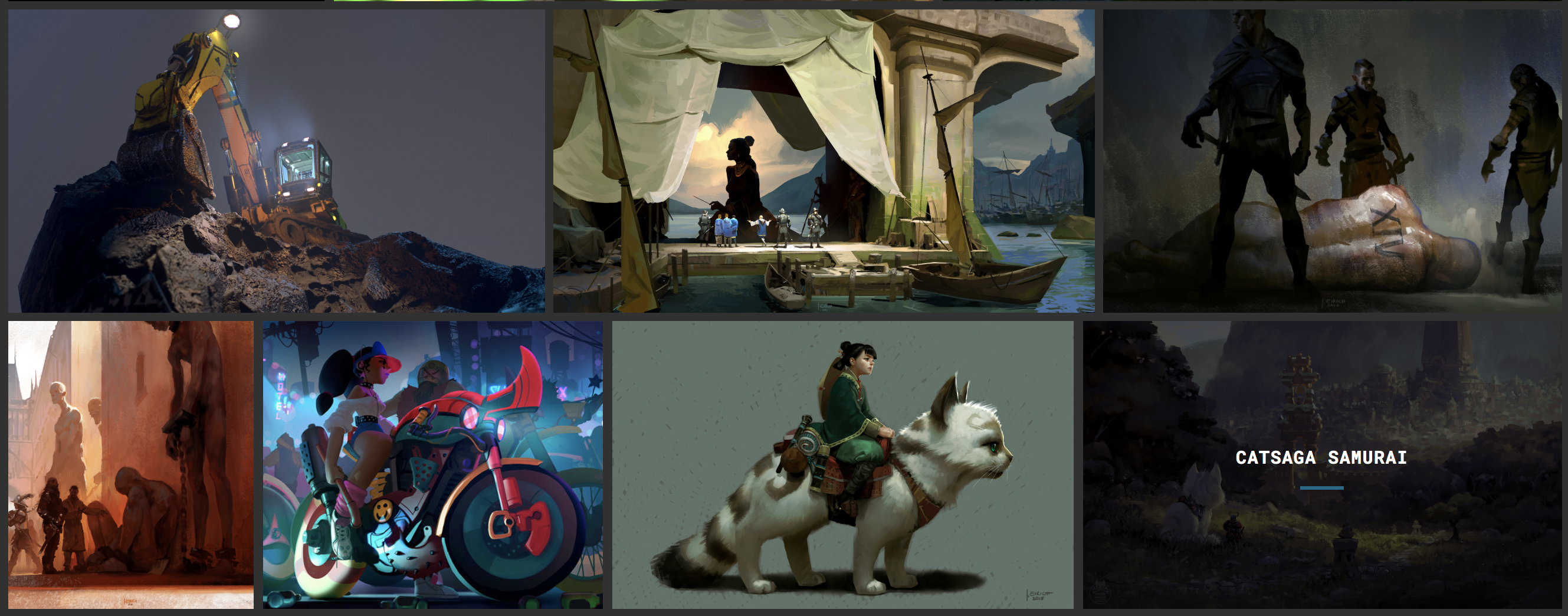
What is the best advice you’ve ever received?
There is a lot of advice that comes to mind that could help to improve on the technical or business side of things. But after ten years of working in this industry and having gone through many ups and downs that this job brings, I would personally promote more than ever to try to maintain a healthy state of mind and to aim for content and a well-balanced way of approaching this career. What that means can be slightly different from one individual to another, but usually, the cause for anxiety, depression, burn-out, psychosomatic diseases, and their ramifications have quite similar roots.
Even if I can’t speak with authority on this subject, I found some answers and ways which worked for me:
– Cut social media as far as you need to. This is not real life and you need to understand that.
– Don’t chase the next big thing. That one big company? It doesn’t matter. That one big project? It doesn’t matter. That next big social media craze? Guess what? It doesn’t matter.
– Take your time. Don’t stress out that someone at a very young age has their breakthrough in the industry and you still haven’t. Instead, focus on your own development and take it step by step.
– Don’t try to appeal to others. Try to appeal to yourself. Find out what you want and make it work for your career.
– Scale down your expectations. Focus on the aspects you have control over and do your best to lay out the bait for the opportunities you wish for.
This is a part of my personal list and there can be of course many other factors that have an impact on your mental health, like physical exercise, a good diet, enough sleep, taking care of relationships, etc., but I’ll cut it short here. The important takeaway is to try to recognize those forces with negative energy that cloud your mind. Cut them out of your life as much as you need to. Open up and embrace the real challenges to develop your art and career.
What do you think makes a strong portfolio?
There are several angles to view this question. Personally, I would say a strong portfolio is one that is able to show the individual artists a unique view of the world, executed in an aesthetically pleasing way. Of course, this can also be a recipe for disaster in the hands of the wrong person, but when it comes from a place of good intention that doesn’t aim to harm others, and rather inspires and pushes your own sensibilities to new heights, then this becomes a strong, unique and memorable body of work. This is a highly subjective take. For someone who wants to hear what to do to improve his chances of getting a job, it’s probably not something he can immediately act on.
If you look past the 9-5 job aspect and see this profession as a form of expression, to entertain, to inspire, to make people stop and think, then I think it’s important to infuse your own vision into it, with your own experiences, personality, and sensibilities. That for me is a strong portfolio. But, I only look at it from an artist’s perspective. I’m well aware that this is not always a way to commercial success. If you are looking for that, than this can be a fine line to walk on and oftentimes leads to compromises. However, walking this line and trying to find a way while pushing the limits can be an exciting part of the job and very satisfying when you are able to sprinkle or even fully inject your taste into a product that reaches a wide audience.
See more of Jakob’s work on his portfolio website. Find out more about ArtStation premium websites here.
